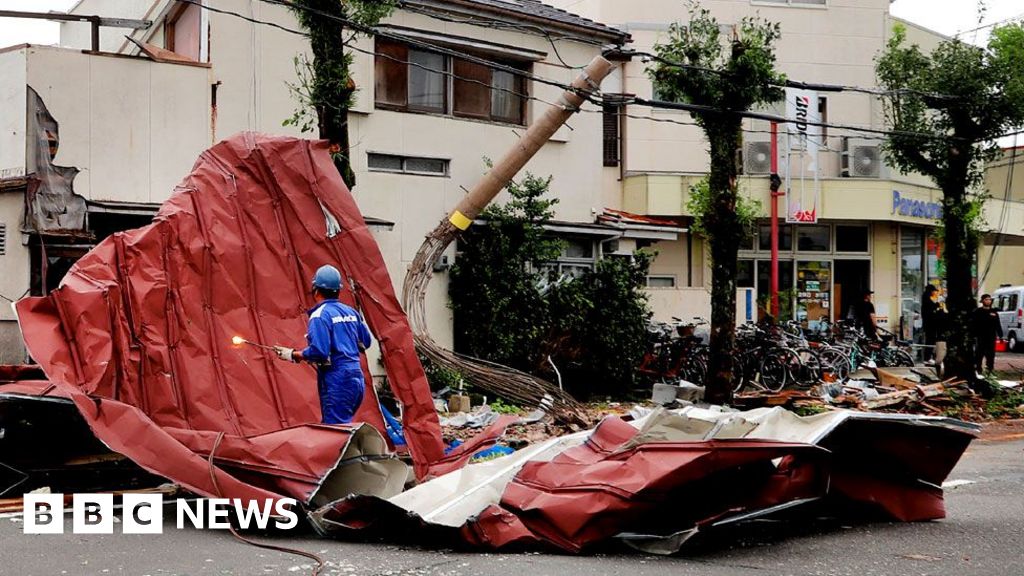Japan has issued the highest level of warning to more than 5 million people after being hit by one of the most powerful typhoons in decades.
Typhoon Shanshan has killed at least four people and injured more than 90 people after making landfall in the southwestern part of the country. Hundreds of thousands were without power.
this fifth level order Notices issued in parts of southern Kyushu island asked residents to take immediate life-saving action, move to safer places or seek shelter higher in their homes. In other areas, people were advised to leave.
After landing, the typhoon weakened into a severe tropical storm and moved northeast, bringing heavy rain and severely disrupting transportation services.
The Japan Meteorological Agency (JMA) said Sugi landed in Kagoshima Prefecture in southern Kyushu at around 08:00 local time on Thursday (23:00 GMT on Wednesday).
It left a trail of destruction, with many buildings damaged, windows shattered by flying debris, trees uprooted and cars overturned.
Three people from the same family – a couple in their 70s and a man in his 30s – were killed in landslides in central Japan late Tuesday ahead of the typhoon’s arrival. Their home in Gamagori was swept away and two other female relatives were rescued.
Police confirmed a fourth person had died Thursday. According to Japanese national broadcaster NHK, an 80-year-old man from Tokushima Prefecture was trapped when the roof of his house collapsed at around 17:30 local time (08:30 GMT).
The fire brigade rescued the man about 50 minutes after the accident, but he later died in hospital. The Japan Meteorological Agency recorded 110 millimeters of rainfall in the area before and after the incident.
The agency issued a rare “special warning” for the most severe storms, warning of landslides, flooding and widespread damage. Wind speeds of up to 252 km/h (157 mph) were reported in Kyushu.
Most evacuation orders are for the southern islands, but some are also for central Japan.
Online videos showed trees swaying, tiles blown off houses and debris thrown into the air as heavy rain hit the island.
Major automakers such as Toyota and Nissan have closed factories, citing employee safety and the potential for parts shortages caused by the storm.
Hundreds of flights to and from southern Japan have been canceled and some high-speed train services have been suspended.
JMA expects the storm to move across Japan over the weekend before reaching the capital Tokyo.
Japan will issue special typhoon warnings when severe storms occur, such as the warning for Shanshan. The same warning was issued in September 2022 Typhoon “Namado” approaches Kyushu – The first such warning issued for areas outside Okinawa.
Typhoon Ambi hit Shanshan earlier this month, causing only minor injuries and property damage but still disrupting hundreds of flights and trains.
Previously, when Tropical Storm Maria hit Honshu Island, northern Japan experienced record rainfall.
A study released last month showed that typhoons in the region are forming closer to coastlines, intensifying faster and persisting longer over land due to climate change.
Additional reporting by Chika Nakayama in Tokyo

